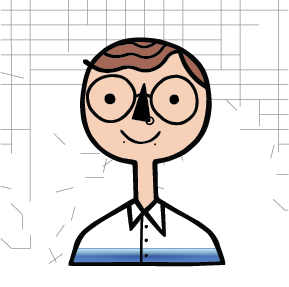Staff Spotlight: Tallie Ritter
Tallie Ritter sat down with storyteller Sydney Moore and shared more about their role at C-SED and what they are looking forward to this year.
Story by Sydney Moore
Describe your role at C-SED
My current title is Program Manager of Data Analytics and Education Technology. It’s much more project-oriented than my previous C-SED role. This shift occurred because C-SED’s structure has been changing as it grows, leaving opportunities for current staff like me to pivot and lean more into different skill areas.
At the moment, I’ve been focusing on updating the Socially Engaged Design Academy Blocks with new learning objectives with a group of amazing graduate facilitators. We are also creating a new block that serves as an introduction to socially engaged design. Additionally, I’ve been working on efforts to organize content and design systems/technologies for users to access C-SED content such as through our Digital Asset Management (DAM) system. Another aspect of my job that has carried over from my previous role is tracking and analyzing all of our interactions data to help tell the story of what C-SED is doing through the numbers.
What drew you to the role?
Originally, I got involved with C-SED through the course “Finding Genuine Design Opportunities” my senior year at UofM. I worked on a project in Ecuador that involved a lot of field work. It made me realize that I wanted to pursue socially engaged design because it was everything I had been excited about when I first went into engineering but hadn’t been as present as I would have liked in my previous coursework and experiences. I ended up applying to my first role at C-SED in 2019 and interviewing while in Ecuador!
What have you learned so far?
I wasn’t super familiar with educational technology, but I did have experience with different softwares and tools. I’ve learned how to address deeper needs, stretching the tech beyond its original conception. For example, I’m working on a project that is kind of a continuation of the DAM project, which was one of my first major projects at C-SED. At first, it was just about the backend organization of our assets, and now I’m thinking about how it can be useful on a larger scope, in a variety of contexts.
How do you see these technologies impacting students?
Some of these systems and technologies will primarily be used by faculty and facilitators, giving them the ability to teach socially engaged design and match it to their content so it fits in naturally. SEDA and the learning blocks, on the other hand, are more focused on students and engaging them in interesting ways. Since the last time the blocks were updated we have learned a lot about how students learn online and how to meet those needs. Specifically, a lot of this content is for a broader group of learners beyond the college of engineering, so we want to be mindful of using examples and such that they can see their own projects and interests.
How has your career path developed over time?
I studied environmental engineering, which was very water treatment focused, and I knew I didn’t want to go into that. During undergrad I worked in the Labadie Collection at the Hatcher library. I enjoyed the role so much I was considering pursuing library sciences.
What do you like most about working at C-SED?
I love the community. We often talk about things outside of work, and how our work impacts the outside world. Conversation between coworkers is always open and friendly. I’ve never met a person involved with C-SED that I didn’t like.
Any social justice topics you are passionate about?
Sustainable, affordable housing has been really important to me and is what led me to environmental engineering. In college, I ended up living in housing co-ops, and I could see myself going back to that.
Favorite design tool?
Airtable is my favorite tool in general, but it’s not much of a design tool. Any of C-SED’s brainstorming tools are excellent. In my opinion, the most exciting part of design is ideation around solutions.



